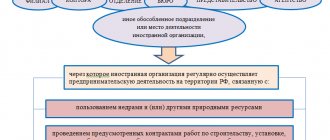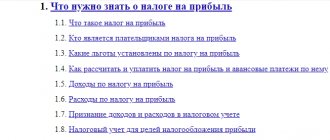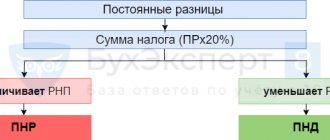Taxation of interest with corporate income tax
The procedure for tax accounting of interest on loans and borrowings allows taxpayers to take into account the entire amount of interest as expenses. However, for controlled transactions, not only the amount of expenses, but also the amount of income in the form of interest for tax purposes can be adjusted. In addition, interest-free loans, deposits with negative rates, and situations in which legal interest arises can cause difficulties. An interview with Sergei Razgulin, active state adviser of the Russian Federation, 3rd class, is devoted to these questions.
What approaches are provided by the Tax Code for accounting for interest on debt obligations in expenses?
Debt obligations are loans, including commodity and commercial loans, bank deposits, bank accounts, and other borrowings.
The method of their registration, for example, with securities, does not matter. Subparagraph 2 of paragraph 1 of Article 265 of the Tax Code of the Russian Federation classifies expenses in the form of interest on debt obligations as non-operating expenses. An expense is the amount of interest accrued for the actual time of use of borrowed funds and the initial profitability established by the issuer (lender) in the terms of the issue (issue, agreement), but not higher than the actual one.
Interest on a debt obligation is any previously declared (established) income, including in the form of a discount.
Features of interest accounting are regulated by Article 269 of the Tax Code of the Russian Federation, tax accounting of interest - by Article 328 of the Tax Code of the Russian Federation.
If a fixed asset is purchased on credit, how is interest on such a loan reflected?
Interest on debt obligations of any type, including loans issued for the acquisition (creation) of property, is reflected in tax accounting as part of non-operating expenses. The nature of the granted credit or loan (current or investment) does not affect the procedure for accounting for interest.
Does the order of their payment established by the contract affect the accounting of interest in expenses? For example, if the payment of interest is provided simultaneously with the return of the principal amount at the end of the contract term.
Paragraph 8 of Article 272 of the Tax Code of the Russian Federation directly requires that interest be included in expenses at the end of each month of the corresponding reporting (tax) period.
In the event of termination of the agreement (repayment of the debt obligation) during a calendar month, interest is included in expenses on the date of termination of the agreement (repayment of the debt obligation).
Accordingly, paragraph 6 of Article 271 of the Tax Code of the Russian Federation provides that, regardless of the payment terms provided for in a loan agreement or other similar agreement, the validity of which falls on more than one reporting (tax) period, income under such agreements is recognized as received and is included in income at the end of every month.
The rules for tax accounting of income (expenses) in the form of interest, contained in paragraph 4 of Article 328 of the Tax Code of the Russian Federation, also require the recognition of income (expenses) in the form of interest on debt obligations by a taxpayer determining income (expenses) on an accrual basis on a monthly basis. In analytical accounting, the amount of interest is reflected as part of income (expenses) on the basis of certificates from the responsible person entrusted with keeping records of income (expenses) on debt obligations.
Thus, if the debt obligation itself provides for the accrual of interest, then regardless of the fact that the term for their payment may be assigned by agreement to the end of the validity of such obligation, interest is subject to monthly accounting in the income of the lender (creditor) and the expenses of the borrower (debtor).
As an exception, interest accrued on the amount of claims of the bankruptcy creditor in accordance with the legislation on insolvency (bankruptcy) is directly mentioned. They are recognized as expenses on the date of transfer of funds from the current account (payments from the cash register). Such interest is taken into account in income on the date of receipt.
If, according to the agreement, early termination of the loan entails a revision of the interest rate for the expired period, what is the procedure for accounting for interest in this case?
It is necessary to clarify income and expenses in the form of accrued interest in the period in which the early termination of the contract occurred.
The occurrence of such income or expenses is not an error or distortion in calculating the tax base and is reflected for profit tax purposes as part of non-operating income or expenses of the reporting period in which they are incurred. In particular, for the creditor, when the rate is reduced, this means reflecting in non-operating income the difference between the amount of interest accrued at the original rate and the amount of interest actually paid at the rate provided for early termination (letter of the Ministry of Finance of Russia dated May 16, 2013 No. 03-03 -06/2/17017).
How much interest is taken into account for tax purposes?
As a general rule, interest calculated on the basis of the actual rate established by the debt obligation is recognized as income (expense). The following principle applies to transactions that are not recognized as controlled: the percentage used in transactions is recognized as market and is attributed to the income (expenses) of the parties to the transactions. This procedure applies to transactions, regardless of the date of their conclusion, income (expenses) for which are recognized starting from 2015.
For which debt obligations can income (expenses) in the form of interest be adjusted?
Adjustments are possible for controlled transactions, that is, primarily in transactions between related parties. In such transactions, income (expense) is recognized as interest calculated on the basis of the actual rate, taking into account the norms of the Tax Code of the Russian Federation on tax control over transfer pricing.
A loan agreement was concluded between Russian organizations - interdependent persons. However, transactions between these persons are not classified as controlled. Is it possible to recognize interest on such an agreement in the actual amount in income/expenses?
A transaction between related parties whose place of registration or place of tax residence of all parties and beneficiaries is the Russian Federation is considered controlled in the presence of the circumstances specified in Article 105.14 of the Tax Code of the Russian Federation. In particular, the amount of income from transactions between these persons for a calendar year must exceed 1 billion rubles. Interest on a transaction between related parties that is not recognized as controlled is recognized in income and expenses based on the actual interest rate.
But how can you determine at the beginning of the year whether a transaction will be recognized as controlled?
When the party to the transaction is known, not only when issuing a loan, but also when purchasing bonds and bills of exchange from third-party issuers, it is necessary to analyze the existence of relationships of interdependence.
With regard to own bills of exchange, valuation may occur at the time of their placement and redemption. There is no need to adjust interest income (expenses) taken into account before recognizing a transaction as controlled, except in cases where the conditions of paragraphs 1 or 2 of Article 105.14 of the Tax Code of the Russian Federation were met in the relations between the parties at the time of the transactions.
Transfer pricing rules may not apply if the interest on the controlled transaction is within the safe range?
Yes.
There are intervals of rates within which interest can be recognized as expenses (income) without special justification. According to paragraph 1.1 of Article 269 of the Tax Code of the Russian Federation, in controlled transactions the taxpayer has the right:
- recognize income at the actual rate if this rate is greater than the minimum value of the interval;
- recognize an expense at the actual rate if this rate is less than the maximum value of the interval.
Clause 1.2 of Article 269 of the Tax Code of the Russian Federation in the intervals used rates in relation to the currency of obligations: the key rate of the Central Bank, the LIBOR rate, EURIBOR, SHIBOR.
Please note that the calculation uses the currency from the rate range at the rate at which payments are calculated according to the agreement (letter of the Ministry of Finance of Russia dated September 3, 2015 No. 03-03-06/1/50811). In other words, if interest is calculated on an amount in euros, expressed in euros, but paid in rubles, the interest interval from EURIBOR +4% to EURIBOR +7% is used.
Since 2016, the interval indicators for debt obligations issued in rubles and arising as a result of transactions recognized as controlled range from 75 to 125% of the key rate of the Central Bank. The phrase “up to 125%” gives rise to the possibility of interpretation, according to which the calculation of the maximum limit should be based on 124.99%, and not 125%.
It is recommended to include in the accounting policy provisions on the use of the range of maximum rates contained in paragraph 1.2 of Article 269 of the Tax Code of the Russian Federation for the recognition of interest in income and expenses on a controlled transaction.
Which rate is considered as a fixed, floating interest rate?
A fixed rate means a payment condition, which is indicated as a number (for example, “12%) for the entire term of the contract.
The rate can also be considered fixed if the contract contains a condition that in case of early repayment, recalculation is carried out at the demand rate for the entire period.
The rate is not considered fixed if several rates are pledged (per period), the right of one of the parties to unilaterally revise the interest rate is provided.
Wording in the agreement (for example, “20% for the first 2 months, then 18% for each subsequent month”, “LIBOR rate minus 0.2%”, etc.) for the purposes of Article 269 of the Tax Code of the Russian Federation are considered as conditions with floating interest rate.
If the rate on a debt obligation arising as a result of a controlled transaction is floating, then the range of maximum interest rates is calculated based on the value of the indicator, for example, the key rate effective on the date of recognition of income (expenses) in the form of interest. That is, at the end of each month of the reporting (tax) period and on the date of termination of the agreement (repayment of the debt obligation).
If the interval rate changes in a particular month, the new rate applies to expenses for that entire month. For example, for March 2022, based on the Central Bank key rate of 7.25%, established on March 26.
On what date is the rate used to calculate the “safe” interval determined for a fixed-rate loan?
In relation to debt obligations for which the rate is fixed and does not change throughout the entire term of the debt obligation, the Central Bank rate (LIBOR, EURIBOR, SHIBOR rate) is understood as the corresponding rate in effect on the date of raising funds or other property in the form of a debt obligation .
From June 1, 2022, a new version of the articles of the Civil Code of the Russian Federation on loans and credit comes into force (Federal Law No. 212-FZ dated July 26, 2017). In particular, in order to recognize a loan (credit) agreement concluded between legal entities, the transfer of money or other things may not be required (Article 807 of the Civil Code of the Russian Federation). At the same time, the “date of attraction (provision) of funds” can be understood as the date of actual crediting of loan funds to the borrower’s account. As a rule, the date of conclusion of the contract and the date of attraction (provision) of funds do not coincide.
How is the term of the debt obligation calculated for the purpose of determining the base rate LIBOR-EURIBOR-SHIBOR for debt obligations placed in tranches?
According to subclause 3 of clause 1.3 of Article 269 of the Tax Code of the Russian Federation, for the purposes of calculating intervals of maximum interest rates, the LIBOR-EURIBOR-SHIBOR rate that is most appropriate to the term of the debt obligation should be applied.
The letter of the Ministry of Finance of Russia dated March 24, 2016 No. 03-03-06/1/16569 states that each new tranche during which funds are transferred to the borrower must be considered as an emerging debt obligation.
For debt obligations placed in tranches, the term of the debt obligation will be the planned term of placement of a specific tranche, and for repaid ones - the actual term of placement of a specific tranche. In case of delay in repayment, up to the moment of actual repayment, the term of the debt obligation is determined according to the planned period, since late payment should not be considered as an error in applying the rate established on the basis of the original term of the debt obligation. After repayment, the term is determined by the actual term.
What consequences occur if the interval is not observed?
The interval values themselves do not equate to market rates.
If the interest exceeds the limits of the interval, then to determine income (expense) not the maximum (minimum) value of the interval is taken, but market rates calculated using pricing methods for related parties. Expenses for paying interest in excess of the established limits cannot be taken into account (clause 8 of Article 270 of the Tax Code of the Russian Federation).
What method is used to set the market interest rate?
The preferred pricing method for transactions between related parties is the comparable market prices method.
The search for comparable transactions (debt obligations) is carried out based on currency, terms, volumes, and methods of collateral. Commercial and/or financial conditions that influence the interest rate are taken into account. For example, credit history, solvency, the procedure for determining the interest rate (fixed or floating), economic comparability of the operating conditions of the parties, including characteristics of markets, commercial strategies of the parties. To assess the comparability of debt obligations, you can use information about debt obligations to which the taxpayer himself is a party (information about attracted and issued obligations), information about the terms of similar debt obligations of third parties (if such information is available).
Can a transaction to provide an interest-free loan be subject to control?
Potential risk is possible if we are talking about periods before 2022 in transactions between related parties (letter of the Ministry of Finance of Russia dated October 5, 2012 No. 03-01-18/7-137).
Since 2022, transactions for the provision of interest-free loans between interdependent persons, the place of registration or place of residence of all parties and beneficiaries in which the Russian Federation is, are not recognized as controlled (subclause 7 of clause 4 of Article 105.14 of the Tax Code of the Russian Federation). This rule applies regardless of the date of conclusion of the agreement (additional agreement to it) within the framework of which these transactions are carried out (letter of the Federal Tax Service of Russia dated April 13, 2017 No. ED-4-13 / [email protected] ).
The Federal Tax Service does not have the right to check whether the price used in these transactions corresponds to market prices. The provisions of Article 269 of the Tax Code of the Russian Federation on the range of maximum interest rates on controlled debt obligations also do not apply to interest-free loans.
In addition, the “material benefit” received by the organization from using an interest-free loan is not defined. Chapter 25 of the Tax Code of the Russian Federation does not provide for the inclusion of such income when taxing the income tax. This position is confirmed by the letter of the Ministry of Finance of Russia dated March 23, 2017 No. 03-03-RZ/16846.
Are there tax risks when issuing interest-free loans?
Funds received under a loan agreement are not taken into account when determining the tax base in income/expenses (Articles 251, 270 of the Tax Code of the Russian Federation).
Only interest is recognized as income/expense under the loan agreement. At a rate of 0% there are no income/expenses. But the issuance of an interest-free loan, as a general rule, is not associated with activities aimed at generating income. When determining the tax base, expenses in the form of the cost of gratuitously transferred property (work, services, property rights) and expenses associated with such transfer (clause 16 of Article 270 of the Tax Code of the Russian Federation) are not taken into account. Consequently, taking into account related expenses during taxation, for example, a bank commission for transferring an interest-free loan, carries the risk of the tax authority filing claims against such expenses as not meeting the requirements established by Article 252 of the Tax Code of the Russian Federation.
When providing interest-free loans or loans with a minimum rate, it should be remembered that if the source of borrowed funds is credit funds, and the amount of interest on the loan is lower than on the loan, this may lead to a refusal to accept the lender’s expenses for paying interest to the bank as economically unjustified .
Do tax risks remain when accounting for interest on transactions not classified as controlled?
Since 2015, Article 269 of the Tax Code of the Russian Federation applies not only to expenses, but also to income.
It is necessary to comply with the requirements of Article 252 of the Tax Code of the Russian Federation on the economic justification and documentary evidence of interest expenses. In particular, interest expenses must be related to activities aimed at generating income. The tax authority may refuse to reduce the tax base due to violations by the taxpayer of Article 54.1 of the Tax Code of the Russian Federation. The absence of the transaction itself or the absence of a business purpose in it, in the opinion of the tax authority, may be indicated by long loan terms (repeated extensions of terms), accompanied by non-payment of interest on the loan (lack of repayment requirements). As a rule, in these cases there is interdependence of the creditor and the debtor (Decision of the Supreme Court of the Russian Federation dated August 16, 2017 No. 310-KG17-10276).
The Tax Code also provides that when paying income, including interest, to a foreign organization, the tax agent, for the purposes of applying international treaties, must establish the actual recipient (owner) of the income.
It should be noted here that, according to the clarified position of the Ministry of Finance, the income of foreign banks from the placement of funds with them by Russian entities at negative interest rates is classified as income from business activities (letter dated January 23, 2018 No. 03-08-05/3288). This means that the specified income is not subject to taxation in Russia (provided that the foreign bank does not have a permanent representative office in Russia).
How are additional fees associated with issuing a loan taken into account?
In addition to paying interest, the borrower is obliged to pay other payments provided for in the loan agreement, including those related to the provision of the loan.
The types of such commissions in practice are the commission (fee) for opening a credit line, for reserving, for the right of early repayment, and others. Commissions on debt obligations can be taken into account for taxation on an independent basis: as expenses for banking services.
The moment of service provision depends on the terms of the contract. In particular, the fee for early repayment of loan debt will be recognized in tax accounting at a time at the time the service is provided (date of early repayment). The fee for issuing each tranche of the loan is taken into account at a time on the date of provision of the service - the provision of the loan tranche. The date of recognition of the fee for opening a credit line in income may be the date of conclusion of the agreement/date of loan issuance.
But it is necessary to analyze the procedure for calculating the commission, including the connection with the size of the debt obligation, not only from the point of view of a uniform or one-time accounting procedure, but also for the possible reclassification of the commission as a percentage.
What are the interests provided for in Article 317.1 of the Civil Code of the Russian Federation?
In accordance with the original version of paragraph 1 of Article 317.1 of the Civil Code of the Russian Federation, unless otherwise provided by law or agreement, the creditor of a monetary obligation had the right to receive interest from the debtor on the amount of the debt for the period of use of funds (“legal” interest).
The use of the creditor's funds arising in connection with the fulfillment of a monetary obligation by the debtor at a later date than the creditor fulfilled the counter obligation to supply an asset (provide a service, etc.) was recognized as paid. And as such payment, legal interest was accrued (clause 53 of the Resolution of the Plenum of the Supreme Court of the Russian Federation dated March 24, 2016 No. 7).
Article 317.1 of the Civil Code of the Russian Federation applied to contracts concluded from June 1, 2015. In order to avoid the accrual of interest, the agreement included provisions on the non-application of the provisions of Article 317.1 of the Civil Code of the Russian Federation.
From August 1, 2016, the new version of paragraph 1 of Article 317.1 of the Civil Code of the Russian Federation provides for the accrual of legal interest only if this is provided for by law or agreement. The amount of interest is determined by the key rate of the Bank of Russia in force during the relevant periods, unless a different amount of interest is provided by law or agreement. Thus, in contracts concluded from August 1, 2016, the condition of non-accrual of interest under Article 317.1 of the Civil Code of the Russian Federation may not be provided for. “Legitimate” interest is not a fine, therefore, the simultaneous application of interest under Article 317.1 of the Civil Code of the Russian Federation and penalties, interest under Article 317.1 of the Civil Code of the Russian Federation and interest under Article 395 of the Civil Code of the Russian Federation is allowed.
If you follow the position of the Ministry of Finance (letter No. 03-03-R3/67486 dated December 9, 2015), then legal interest is reflected in the income/expenses of the organization according to the general rule for accounting for interest income/expenses on debt obligations (at the end of each month and on the date of termination of the obligation ).
reporting tax reporting
Send
Stammer
Tweet
Share
Share
Resolution of the Eleventh Arbitration Court of Appeal dated 09/08/2015 in case No. A55-10796/2014
Let us immediately note that this case was at one time sent for review and the said Resolution already applies to a new consideration.
In this case, a Russian CJSC, the borrower, received a loan from a Russian LLC, the lender. At the same time, a foreign organization (Seychelles) directly owned more than 20% of the borrower and also directly owned 74% of the lender (Fig. 2)
Borrower ownership pattern
Rice. 2
Initially, the loan agreement was concluded in 2009 at 10.5% per annum. At the end of 2010, the parties agreed to add accrued but not fully paid interest to the principal debt and increased the interest rate to 12% per annum. The loan was partially repaid in 2010, and in 2011 the loan and interest were repaid in full.
Based on the results of a tax audit of the borrower for the period 2009 - 2011. the inspectorate assessed additional taxes on him. The taxpayer partially disagreed with the inspector's decision. In particular, the borrower company did not agree with the part where the tax authority decided that the company was obliged, as a tax agent, to calculate, withhold and pay to the budget income tax on the excess portion of accrued and paid interest under the loan agreement we mentioned ( concluded with a Russian organization).
The Inspectorate considered that from a literal reading of clause 4 of Art. 269 of the Tax Code of the Russian Federation it follows that excess interest, equated to dividends, is taxed at the source of payment in situations where the lender is both a foreign company itself and a Russian company, which is its affiliate.
The company believed that from the norms of the Tax Code of the Russian Federation it follows that the Russian borrower acts as a tax agent and must calculate, withhold and transfer income tax to the budget when paying interest (including those reclassified as dividends), only if the payments are made to a foreign organization. In the case of payment of income in the form of interest to Russian organizations, this income is not subject to income tax at the source of payment.
According to the inspection, the wording of clause 4 of Art. 269 of the Tax Code of the Russian Federation does not contain a mandatory indication that only interest paid to a foreign company can be reclassified as dividends.
The inspection decided that in this case, in accordance with paragraph 4 of Art. 269 of the Tax Code of the Russian Federation, interest paid in excess of the maximum level calculated on the basis of the capitalization ratio and the share of participation of the foreign parent company in the Russian organization in the manner established by clause 2 of Art. 269 of the Tax Code of the Russian Federation, are taxed in the same way as dividends paid to a foreign organization, at the appropriate tax rate (equated for tax purposes to dividends paid to a foreign organization).
During the first consideration of the case, the courts of first and appellate instances agreed with the inspectorate
.
However, the cassation court overturned the decisions of the lower courts in this episode and sent the case for a new trial [7]. Upon a new review, the courts declared the inspectorate's decision in this regard illegal
.
[7]. Resolution of the AS PO dated March 26, 2015 in case No. A55-10796/2014.
At the same time, the court ruling noted: indeed, Ch. 25 of the Tax Code of the Russian Federation does not contain provisions that allow excluding from the income of a Russian organization - the lender that part of the interest received by it, which for tax purposes is equated on the basis of clause 4 of Art. 269 of the Tax Code of the Russian Federation for dividends.
However, according to the judges, this position of the tax authority leads to the fact that the tax will be calculated twice on the same amount - the positive difference between the amounts of accrued and maximum interest, which for tax purposes is equal to dividends: firstly, the borrower as the tax agent will calculate tax on dividends; secondly, the Russian organization - the lender will include the entire amount of interest received by it in taxable income. Calculation of tax twice contradicts the constitutional principle of single taxation of income.
Clause 1.3 of Article 269 of the Tax Code of the Russian Federation
For the purpose of applying paragraph 1.2 of this article:
clause 1 in relation to debt obligations for which the rate is fixed and does not change throughout the entire term of the debt obligation, the key rate of the Central Bank of the Russian Federation (LIBOR rate, EURIBOR rate, SHIBOR rate) is understood as the corresponding rate in effect on the date of raising funds funds or other property in the form of a debt obligation; (As amended by Federal Law dated 03/08/2015 No. 32-FZ)
clause 2 in relation to debt obligations not specified in subclause 1 of this clause, the key rate of the Central Bank of the Russian Federation (LIBOR rate, EURIBOR rate, SHIBOR rate) is understood as the corresponding rate in effect on the date of recognition of income (expenses) in the form of interest in accordance with this chapter; (As amended by Federal Law dated 03/08/2015 No. 32-FZ)
clause 3 in relation to the intervals of maximum interest rates on debt obligations established by subclauses 2 - 6 of clause 1.2 of this article, the LIBOR rate (EURIBOR rate, SHIBOR rate) is accepted for the period that most closely corresponds to the term of the debt obligation specified in clause 1.1 of this articles.
(Clause introduced - Federal Law dated December 28, 2013 No. 420-FZ)






